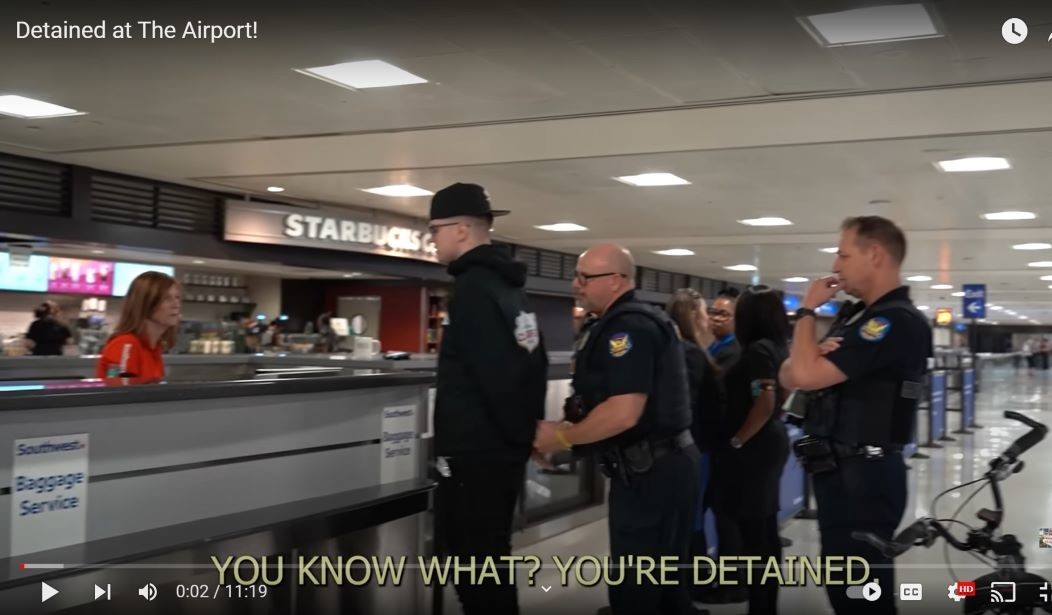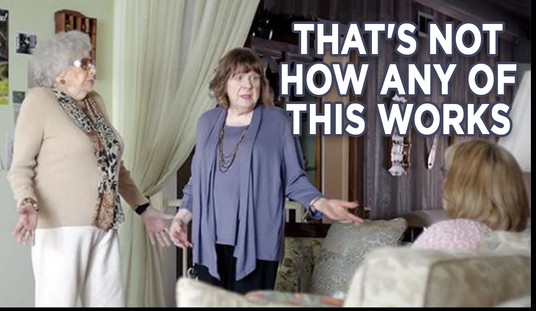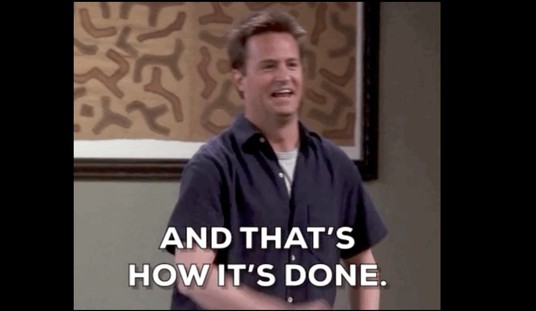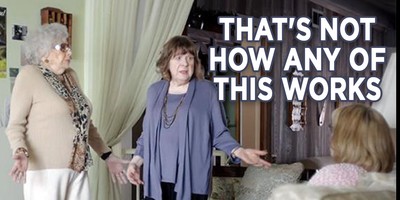Years ago, there was a show on SyFy called Scare Tactics. It was a prank show where they would try to make an unsuspecting person think they are in some kind of Science Fiction or horror-based scary situation so you could laugh at them freaking out. For instance, this video shows several examples of their pranks:
At the time, I enjoyed laughing at it, but my lawyer brain also activated and I thought to myself ‘someday, someone is going to get shot on this show and there’s a good chance it will be legal.’ Right or wrong, if you terrorize enough people, one of them is going to pull out a gun and shoot you. Maybe the shooting isn’t legal, maybe it isn’t even legal for that person to be carrying, but I thought if the show went on long enough, it was going to happen. Give it enough time, and it is inevitable. I guess the show went off the air before that could happen, though.
Like many prank shows that have existed over the years, the people who made Scare Tactics told people not to try this at home. But that show aired about two decades ago, and these days almost any ordinary person can make a prank show on YouTube. Just do pranks on people, film it, and upload the video. It seems simple enough. They can try this at home and get paid by the click, but maybe they wouldn’t know how to do it correctly, and safely.
Thus, you get the YouTube show called Classified Goons, starring a guy named Tanner Cook. As we reported yesterday, a few months ago when he was carrying out a prank against a man named Alan Colie, Colie ended up drawing a gun and shooting him, leaving him severely wounded, although thankfully, he survived. And a jury just acquitted Colie of malicious wounding and essentially firing a gun in an occupied buildng, finding that he acted in self-defense.
When Cook was first shot, I saw a lot of people complaining that this was proof that people are too gun-happy in America or Virginia. But when I went to his YouTube channel and checked it out, I saw it really wasn’t surprising that he got shot.
Recommended
Wait, Aaron, you might say, are you saying he deserved to get shot?
Well, to quote the Clint Eastwood classic Unforgiven:
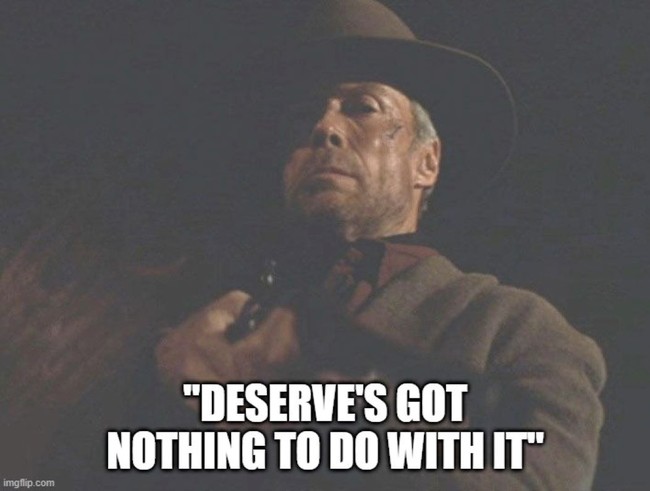 I am not saying that he did anything that should be punished with death or being shot, but when one of his targets ended up shooting him, it was wholly predictable. And long before the jury reached its verdict, I knew it might have been legal, just judging by the kind of behavior Cook had been engaged in. And that is mostly what this post is about—explaining why I think so.
I am not saying that he did anything that should be punished with death or being shot, but when one of his targets ended up shooting him, it was wholly predictable. And long before the jury reached its verdict, I knew it might have been legal, just judging by the kind of behavior Cook had been engaged in. And that is mostly what this post is about—explaining why I think so.
Let’s look at one of his most recent videos. The title was originally ‘Taking Bags from Baggage Claim Prank’ and do I have to tell you they are already treading on thin ice, legally?
🚨BREAKING: Samuel Brinton, ex non-binary, cross-dressing DOE employee, sentenced to 180 days in Las Vegas airport luggage theft case https://t.co/TIbcn3P0zo
— Benny Johnson (@bennyjohnson) April 14, 2023
Yeah, screwing with people’s bags at the airport is not a good idea. One interesting thing is literally as I wrote this piece, the title changed to ‘Detained at the Airport!’ And that is accurate. So, let’s how he ended up being arrested, at least temporarily:
Let's go through this thing. It starts off with him impersonating a security officer on a campus. This part is relatively harmless. He is just trying to get people to do ridiculous things for a fake sobriety check. But you notice that when one guy asks if they will be arrested if they don’t comply, there’s a sudden cut, suggesting that they left out his answer to that. Did he say ‘yes?’ How far did he go in pretending to have government power?
While the prank was relatively harmless, it’s also potentially criminal. I will assume all of this is in Virginia, because apparently that is where these people are based. Some videos clearly indicate that they are in other parts of the country, but they mainly seem to stomp around Northern Virginia, not too far out of my ‘neighborhood’ in Manassas. So, let’s look at Va. Code § 18.2-174.
Impersonating law-enforcement officer; penalty.
Any person who falsely assumes or exercises the functions, powers, duties, and privileges incident to the office of sheriff, police officer, marshal, or other peace officer, or any local, city, county, state, or federal law-enforcement officer, or who falsely assumes or pretends to be any such officer, is guilty of a Class 1 misdemeanor. A second or subsequent offense is punishable as a Class 6 felony.
Obviously, he wasn’t pretending to be a cop (broadly defined). But the law doesn’t just cover impersonating a cop, but also falsely assuming or exercising their functions, powers, duties, and privileges. And he sure as heck looked like he was telling them that he had the power to stop them and force them to do these things. If he was, then he committed a crime and filmed it.
Then we get to the airport and, fortunately for him, he doesn’t try to pull a Samuel Brinton. He mostly is creating false disputes with random people, falsely claiming that bags that belong to them actually belong to him. And let’s freeze frame on this moment:
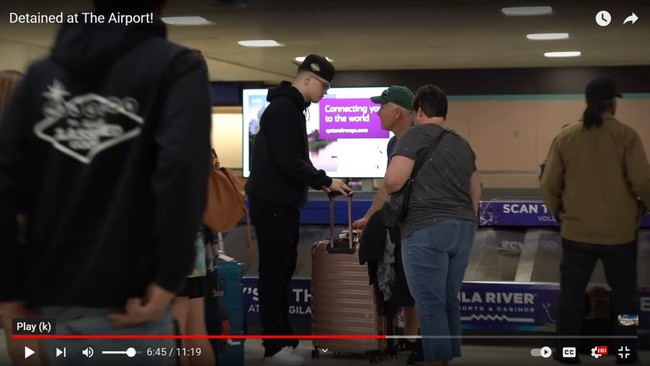 That looks like a battery. A battery doesn’t have to be punching or anything like that. A battery can be nothing more than any offensive touching without consent. Tapping the shoulder of a person in front of you in line isn’t typically going to be battery. But grabbing a stranger’s behind is. And battery is not limited to touching your body. Touching something connected to a person’s body can be a battery. For instance, touching a woman’s purse while she is carrying it can easily be a battery. So can touching a person’s luggage as they are holding it—which is what Cook appears to be doing in this screenshot. There are several other moments where he might have also been doing that. That is a class 1 misdemeanor in Virginia.
That looks like a battery. A battery doesn’t have to be punching or anything like that. A battery can be nothing more than any offensive touching without consent. Tapping the shoulder of a person in front of you in line isn’t typically going to be battery. But grabbing a stranger’s behind is. And battery is not limited to touching your body. Touching something connected to a person’s body can be a battery. For instance, touching a woman’s purse while she is carrying it can easily be a battery. So can touching a person’s luggage as they are holding it—which is what Cook appears to be doing in this screenshot. There are several other moments where he might have also been doing that. That is a class 1 misdemeanor in Virginia.
And then when security comes over, Cook runs into another problem:
§ 18.2-461. Falsely summoning or giving false reports to law-enforcement officials.
It shall be unlawful for any person (i) to knowingly give a false report as to the commission of any crime to any law-enforcement official with intent to mislead; (ii) to knowingly, with the intent to mislead a law-enforcement agency, cause another to give a false report to any law-enforcement official by publicly simulating a violation of Chapter 4 (§ 18.2-30 et seq.) or Chapter 5 (§ 18.2-77 et seq.); or (iii) without just cause and with intent to interfere with the operations of any law-enforcement official, to call or summon any law-enforcement official by telephone or other means, including engagement or activation of an automatic emergency alarm. Violation of the provisions of this section shall be punishable as a Class 1 misdemeanor. However, if a person intentionally gives a false report as to the commission of any crime to any law-enforcement official, causes another to give a false report to any law-enforcement official, or calls or summons any law-enforcement official against another person because of his race, religious conviction, gender, disability, gender identity, sexual orientation, color, or national origin, the person is guilty of a Class 6 felony.
So, I’m not shocked he was arrested.
But Cook has yet another problem. Let’s go back to that battery that I mentioned a minute ago. If someone commits a battery against you, you are allowed under the law to use force to stop it. Now, I’m going to skip over the issue of deadly force, because as one commenter on the video observed:

(They are being seriously dragged in the comments of their videos, right now.)
Of course, airport baggage claims are, in my experience, pretty well protected. Unlike other ‘gun-free’ zones, you typically can’t get into this area without going through security that includes metal detectors and the like. At least that was my experience the last time I flew—but it’s been a while. So, unlike many gun-free zones a.k.a. victim disarmament zones, he is not likely to be shot or stabbed here, so I will put aside the issue of lethal force for now.
But that person could easily use non-deadly force against Cook to end his technical battery. Also, they could use non-deadly force to protect their property. In other words, very often he is giving those people the legal right to do all kinds of things, such as wrestling the bag away, pushing him away or throwing a normal punch. And that could have led to huge incident.
Thus, in one video, he seems to commit three crimes, and open himself to at least non-deadly force in self-defense and defense of property. Many of his other videos have similar problems.
Now, let’s turn to the video of the prank that got him shot. This all happened in Loudon County (famous for covering up rapes) and, in fact, I am pretty sure I’ve been to the mall where this happened. The video is in this Tweet. It is fashionable to give people a content warning but it’s really not graphic.
YOUTUBE PRANK FAFO—A jury found a food delivery driver not guilty in the shooting of a YouTube prankster who followed and harassed him at a mall in Leesburg, Virginia.
— Amiri King (@AmiriKing) September 30, 2023
Alan Colie was acquitted of aggravated malicious wounding in the shooting of Tanner Cook, who owns the… pic.twitter.com/Xa3kGE41Ui
This is the play-by-play, as I see it. Cook holds up a cell phone to Colie and runs a recording that (according to other reports) says ‘hey, dipsh-t, stop thinking about my twinkle’ (censorship added) over and over again. Colie first tries to walk away, not sure what the hell is going on. Cook pursues him, still trying to put the phone near his ear, and Colie pushes his hand away. Then, finally, Colie pulls out an apparently concealed weapon and shot him.
First, Colie was being menaced by three different people. You see two of them in the video, but where is the third? Well, that would be the guy holding the camera. When watching TV and movies we are used to forgetting that the camera and the person holding the camera is there, but we shouldn’t forget it in this case.
Now, one question you might ask is ‘who is the initial aggressor?’ This can be important in the law of self-defense, because if Colie was the initial aggressor, he might not be allowed to invoke the right of self-defense as easily. But fortunately for him, Cook is the aggressor. A friend thought otherwise, but, respectfully, he was wrong:
I can think of scenarios where you would demand justice with different players. I try to keep the same standard for people I agree with as I do for those I strongly disagree with. Don’t fall into the same double standard trap we all detest so much.
— Fusilli Spock (@awstar11) September 30, 2023
2/2
I think the confusion comes from the fact there are really three ways to look at the use of force when one looks at it as a bystander.
First, ‘would I do it?’ In other words, ask yourself if you would do the same thing in the same situation.
Second, ‘is it legal?’ That should be self-explanatory.
Third, ‘is this the best practice to keep you out of legal trouble?’ The best outcome for Colie was to be safe and not even indicted. On the other hand, there is the old adage that ‘it is better to be judged by twelve than carried by six’ meaning it is better to be tried criminally (by twelve jurors) for protecting yourself than to have your dead body carried by six pallbearers. Colie might have truly thought at the time he was close to being killed or seriously harmed. Still, whatever Colie thought at the time he shot, whatever the legality of his actions, I suspect today that he wished he didn’t shoot Cook, after all. It would have saved him a lot of trouble and with 20/20 hindsight, we know he wasn’t really in danger.
So, I would argue that the CCW class 'Spock' referenced was probably teaching more from the third perspective—best practices to keep you out of trouble. That’s a different issue than the law.
For instance, ‘Spock’ points out that ‘[f]rom the clip, the shooter initiated first physical contact.’ That is true and it’s usually a good idea from that best practices perspective not to be the first person to initiate first physical contact.
But the law sees that encounter differently. What I see is that Cook is assaulting Colie—and I have little doubt that his lawyer pointed that out in the trial. An assault can be nothing more than intentionally placing a person in reasonable fear of being battered. Now, you just learned what battery means, so you know that if Cook had actually touched Colie’s ear, for instance, that would have been a battery. And a reasonable person in Colie’s position would have been concerned that some kind of offensive touching was about to happen. Mind you, that adjective ‘reasonable’ is very important. If you are crazy and hallucinating the danger, that doesn’t count as reasonable. And if your belief that you are about to be battered is based on some kind of bigotry like racism, that is also unreasonable. As for intention, that generally means you are doing this on purpose and not by accident (such as tripping and accidentally almost striking a person as you fall).
Now, besides possibly being a criminal act on Cook’s part, that also means that Colie wasn’t the initial aggressor when he first tried to push Cook away. Normally you could say Colie committed a battery. But because Colie was using non-lethal force, acting in self-defense against a man who was assaulting him, his actions were legal and not an act of agression. Colie was very clearly right to use that level of force, which is why he was not even charged with battery.
And not for nothing, but you know who else committed assault in a very similar way? Nathan Phillips. Getting into a person’s face and beating a drum close to it—close enough that you could easily accidentally hit that person’s face—is an assault:
This is elder Nathan Phillips, an Omaha elder who is also a Vietnam Veteran and former director of the Native Youth Alliance.
— Ted Corcoran (RedTRaccoon) (@RedTRaccoon) January 19, 2019
He is a keeper of a sacred pipe and holds an annual ceremony honoring Native American veterans in the Arlington National Cemetery.
I stand with him. pic.twitter.com/CplAvTlSQT
And this chucklehead stood with the man assaulting a child.
Returning to Cook/Colie, it’s less clear why Cook wasn’t charged with assault. But I could imagine the prosecutor thinking something like this:
The guy ended up being shot. Life punished him more than the state of Virginia could, so we won’t bother to charge him. I suspect he has learned his lesson better than we could teach him.
If that’s what they were thinking, that seems reasonable, although I am not sure Cook has learned his lesson.
But back to self-defense, that means Colie was clearly in the right to try to push Cook’s hand out of his face. Therefore, he wasn’t the first aggressor, and therefore his path to self-defense in the shooting is more straightforward. But was he right to shoot Cook?
Well, well one subject I’ve been ducking before now is the idea of deadly force. What am I talking about? Well, it is not simply force that kills. Rather it is force that is likely to cause death or some kind of significant bodily injury. Different states have different formulations about how significant that injury has to be. Many states will say ‘death or serious bodily injury.’ Virginia says ‘death or great bodily harm.’ Furthermore, the law isn’t super clear on what counts as a serious injury or a great harm, but I have looked into the issue in the past when the George Zimmerman/Trayvon Martin case was percolating. Naturally, if you are threatened with any injury where you have a good chance of dying on the way to the hospital, that counts. If it might permanently disable you in a significant way, such as blinding you, or causing you to lose significant functionality in your hand, that counts. The same can be said for an injury that causes you to be significantly disfigured.
And I would argue that any force likely to actually make you lose consciousness counts as deadly force. I’ll explain why in a moment, but that doesn’t usually include a simple punch, unless it is something like what Mike Tyson could throw in his prime. But that is a more controversial interpretation.
You see, in Virginia, in order to use deadly force, you have to be facing a reasonable fear of deadly force yourself (there is also a related doctrine of defense of others, but I’m not going to worry about it, here). I believe this is the law in every state, although the definitions of what counts as deadly force varies by state.
(And, of course, you guys know I am not giving legal advice, here. I am discussing the law because as citizens of this Republic, you deserve to understand the law, so you can decide if the law is good, bad, or merely needs improvement.)
By the way, while you can use deadly force if you reasonably fear deadly force, that’s not the only time you are allowed to do it. Check your local laws, but most states will allow you to use deadly force to resist being raped or kidnapped, and in other situations. In other words, if the laws in the Star Wars universe are the same as Virginia’s, then Han Solo had the right to shoot Greedo first, if only because Greedo was in the process of kidnapping him.
Bite me, George Lucas!
And here’s something crucial to grasp. The mindset of the other person doesn’t matter. I suspect that Cook looks at it like this: ‘I wasn’t trying to hurt Colie, so he had no reason to shoot me!’ But the law doesn’t care how much actual danger there is or how things look in 20/20 hindsight. When it comes to self-defense, the guilt or innocence of the person the actor is using force against is irrelevant. What is relevant is how much danger did the actor reasonably perceive in that moment?
Let me pull out a famous example to illustrate. Here’s a classic scene from Die Hard, and if you jump ahead to about the 0:57 mark, John McClane and Al Powell share a moment where Powell talks about the time he shot a kid:
Powell explains that he no longer works as a beat cop because he shot a kid. He explains it was dark and the kid had a toy gun. He thought it was a real gun and shot the kid. It sounds like the kid survived, but Powell could never bring himself to point a gun at a person again.
But he wasn’t telling that story in prison. In fact, if it wasn’t for his psychological unwillingness to use his gun to defend himself and others, the LAPD probably would let him work as a beat cop again. Why? Because he thought it was a real gun and apparently the people who investigated this shooting decided that his belief that this was a real gun was reasonable. The law doesn’t care that the kid was probably innocent of any crime. Powell reasonably believed this kid was pointing a real gun at him at the time, and that gave him the right to shoot him.
And while Powell is a cop in that movie and that movie is fictional, that’s still a very good illustration of how perception is what matters, whether you are a cop or not, when you are defending yourself. There are some differences in how self-defense law applies to the police, but this is not one of them.
This is why I invoked William Munny a minute ago:
 Self-defense is not about determining whether or not the person you are using force against is guilty or innocent of a crime. In Powell’s story, that kid sounds completely innocent and it doesn’t matter. Of course, if you know a person committed certain crimes in the past, that can influence that perception—for instance, if you know that someone just committed a mass shooting, you have a right to be more concerned that they might try to harm you than a random civilian. But even then, it is not about guilt or innocence. It is purely about the reasonable perception of danger at that moment.
Self-defense is not about determining whether or not the person you are using force against is guilty or innocent of a crime. In Powell’s story, that kid sounds completely innocent and it doesn’t matter. Of course, if you know a person committed certain crimes in the past, that can influence that perception—for instance, if you know that someone just committed a mass shooting, you have a right to be more concerned that they might try to harm you than a random civilian. But even then, it is not about guilt or innocence. It is purely about the reasonable perception of danger at that moment.
Why? What I argue is that you have to flip it around. It’s not just about what level of force you can use, but what you have to accept in terms of danger. If you are not allowed to use deadly force, then you are limited in what you can do to defend yourself. So, for instance, in most situations where all you are facing is a normal punch (and not a Mike Tyson haymaker), you can’t just shoot the other guy. The law says that you can defend yourself but you can only use non-deadly force in return and that means you have to put up with the risk of the kinds of harm that non-deadly force brings—things like bruises and black eyes. That is because we as a society don’t think it is right to kill a guy just to avoid those relatively minor injuries.
So, then I circle around to the definition of deadly force—what counts as great bodily harm? And I think the way to look at it is what danger should a person have to put up with? Obviously, we as a society can’t tell a person that they have to put up with an injury that would kill, so you can use deadly force to stop that. The same goes for an injury that would leave you disabled. The same goes, in my mind, for a man attempting to rape a woman—every state should let her kill her attacker, if they don't already. The same goes for a person trying to kidnap another: Once you are kidnapped and under that other person’s power, who knows what that person might do to you?
In other words, Han should be allowed to shoot first. Bite me, George Lucas!
And on the same count, any injury that would leave you unconscious should justify deadly force, because once you are out cold, who knows what that other person might do to you? So, you shouldn’t have to put up with being knocked out.
But that is only how I argue the issue: Not every court sees it that way, just yet.
It also goes to why we should allow a person to use deadly force because they reasonably fear deadly force, even if that person is actually wrong. Let’s say a man pulls out a real gun and points it toward you. You draw your gun and shoot him first, killing him. Then when the police arrive, they examine the other guy’s gun and discover that it was unloaded—and you had no idea. On one hand, that is a clearly suboptimal outcome. A guy was dead and he was posing no actual threat to anyone. But can we really expect a person not to shoot under those circumstances?
And the same can be said for the fictional Officer Powell, shooting the kid who had a ray gun. If his reasonable perception is that the kid was pointing a real firearm at him, can the law rightfully say to him that he can’t shoot to stop what he thinks is an imminent, deadly threat?
So, let’s go back to Cook and Colie. First, there is no question that Colie used deadly force. It is reported that Colie shot Cook in the stomach, but to be blunt, I can’t imagine any scenario where one can intentionally shoot a firearm into another human being and it would not be considered deadly force. I am open to being proven wrong in a future case, but nothing in this case convinces me that this is not deadly force.
But did Colie have a reasonable fear of deadly force when he used his own deadly force? For your convenience, here’s that video again:
YOUTUBE PRANK FAFO—A jury found a food delivery driver not guilty in the shooting of a YouTube prankster who followed and harassed him at a mall in Leesburg, Virginia.
— Amiri King (@AmiriKing) September 30, 2023
Alan Colie was acquitted of aggravated malicious wounding in the shooting of Tanner Cook, who owns the… pic.twitter.com/Xa3kGE41Ui
Now, on one hand, I don’t see anything that says that Colie definitely felt a reasonable fear of deadly force, but I don’t see everything that Colie saw. I can kind of see some of what Cook is doing. But I can’t see what exactly the cameraman was doing and I can’t see what the other member of their crew is doing. There two other people accompanying Cook, and I don’t know exactly what they were doing, in that crucial moment before Colie drew his gun and shot.
And I really don’t know what the jury saw. The reporting on the case is extremely sparse. Did someone use computer techniques to stabilize the video so that we can see what Cook was doing in that crucial moment before he was shot? Was there security footage that might have shown more? What did any eyewitnesses say? Did Colie take the stand and what did he say? Maybe the evidence would show that someone’s hands went into a pocket in a way that made Colie think that someone was getting ready to draw a weapon? Who knows?
And I have said for a long time that self-defense changes in crowds. That is part of why I think Kyle Rittenhouse was justified in using deadly force, and so was Lt. Michael Byrd of the Capitol Police. What Colie could do if he was only concerned about one man is different than when he is concerned about three.
And it also matters what the burden of proof is. During the Rittenhouse and the Zimmerman cases, I learned that in Florida and Wisconsin, when there were enough facts to raise the possibility of self-defense, the prosecution had the burden of proving that it was not self-defense beyond a reasonable doubt. In Virginia it is different. In Virginia, the defendant has to provide evidence that he or she acted in self-defense, but rather than the prosecution having to prove it is not self-defense, the defendant has to show enough evidence to create a reasonable doubt. So, it’s similar, but slightly harder, in Virginia, to win a self-defense claim.
Some people think that the jury disregarded the law and just said, more or less, ‘you effed around and found out, Cook.’ But the people saying this haven’t seen what the jury saw in terms of evidence, just like I haven’t. Thus I can’t say the jury was definitely right, but I can’t say it was definitely wrong, either. But I will remind you this was in liberal Loudon County, so one might suspect that they wouldn’t have accepted self-defense unless they felt the evidence was clear.
Frankly, I usually assume juries get it right. I am always open to being convinced otherwise, but I start with the assumption the jury got things right. Except here, I can’t make that assumption because I don’t see how they could possibly be right about everything.
You see Colie is still in custody right now. He was still convicted of another charge:
Man acquitted of shooting YouTube prankster stuck in jail anyway https://t.co/5HGEFzkNdz
— Fox News (@FoxNews) September 30, 2023
From the article:
A DoorDash delivery driver who shot a YouTube prankster on video in a Virginia mall has been acquitted of malicious wounding but remains jailed after jurors found him guilty of a lesser gun charge. …
Colie had pleaded not guilty and argued the shooting came in self-defense. Jurors, in part, agreed, acquitting him on the most serious charge, aggravated malicious wounding, as well as malicious shooting inside an occupied building.
However, they found him guilty of using a firearm during the commission of a felony, and he will remain behind bars pending a motion from his lawyers, who argued that the lesser conviction is inconsistent with Virginia law after jurors found he acted without malice and in self-defense.
Sometimes a jury hands down a verdict that frankly makes absolutely no sense and this appears to be one of those cases. Here’s the relevant section of the Virginia Code:
§ 18.2-53.1. Use or display of firearm in committing felony.
It shall be unlawful for any person to use or attempt to use any pistol, shotgun, rifle, or other firearm or display such weapon in a threatening manner while committing or attempting to commit murder, rape, forcible sodomy, inanimate or animate object sexual penetration as defined in § 18.2-67.2, robbery, carjacking, burglary, malicious wounding as defined in § 18.2-51, malicious bodily injury to a law-enforcement officer as defined in § 18.2-51.1, aggravated malicious wounding as defined in § 18.2-51.2, malicious wounding by mob as defined in § 18.2-41 or abduction. Violation of this section shall constitute a separate and distinct felony and any person found guilty thereof shall be sentenced to a mandatory minimum term of imprisonment of three years for a first conviction, and to a mandatory minimum term of five years for a second or subsequent conviction under the provisions of this section. Such punishment shall be separate and apart from, and shall be made to run consecutively with, any punishment received for the commission of the primary felony.
It's basically using a gun while committing some other crime and I don’t see how the jury could possibly believe this to be true, if they acquitted him on the other charges. What is the other crime in that situation? It can’t be any kind of unlawful shooting, because they said it was lawful. Maybe I am missing something, but I can’t imagine how they can justify this verdict.
Which raises the question, did the jury not understand the instructions they were given? That’s certainly possible. But the other possibility is that they did something they really weren’t supposed to do. It might have been that some jurors thought Colie was guilty of everything, while some thought he deserved to be acquitted of everything and so they decided instead to split the difference: ‘Okay, then let’s acquit him of two charges, but convict him of the third.’ It’s improper because you are supposed to only vote to acquit or to convict based on the merits of that particular charge. If you think he should be acquitted on all charges, you should never vote to convict that person of anything and the reverse is true if you think the defendant is guilty. They can certainly try to convince each other as they did in the classic Twelve Angry Men, but if they couldn’t agree, then the only solution would be a hung jury.
So, the judge should hear the issue of this inconsistent verdict and, unless I am missing something, the judge should set Colie free.
As far as Cook is concerned, I understand that he is making between $2,000 and $3,000 a month doing his YouTube videos, though he might have been slowed down as he recovered from his injuries. If he is going to keep doing this—and judging by this video he is ...
... he needs to speak with a good lawyer. He needs that lawyer to go over all of his videos much in the way I did in this post, explain to him all the criminal acts he is committing, and all the ways he is creating a situation where a person can lawfully use force against him, and explain to him how to avoid committing crimes and getting in situations where a person can lawfully use force against him.
And at the same time, if he doesn’t stop, soon, Virginia law enforcement should consider pursuing criminal charges against him. I’m not sure I should recommend that you watch as many of his videos as I did. But I have watched quite a few of his videos and his behavior is criminal and reckless, and someone is probably going to get hurt. Again.
















